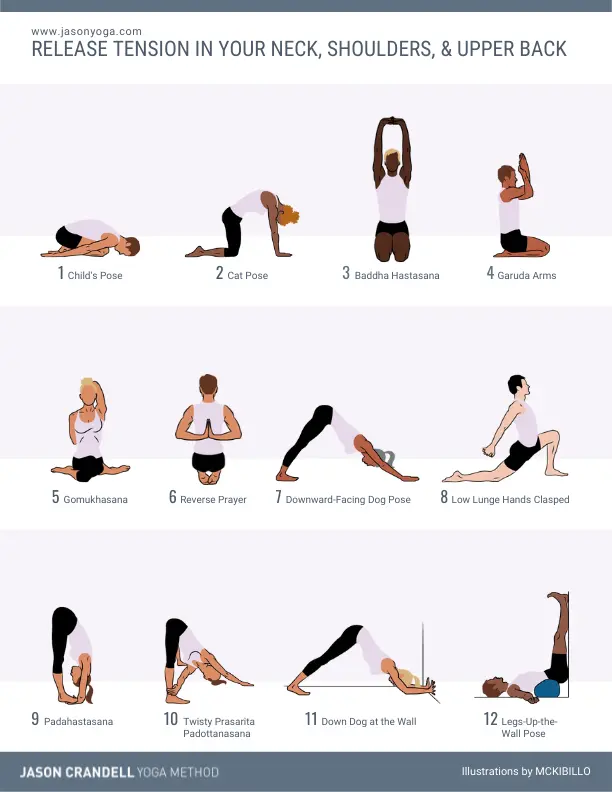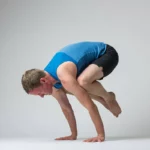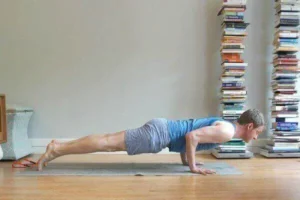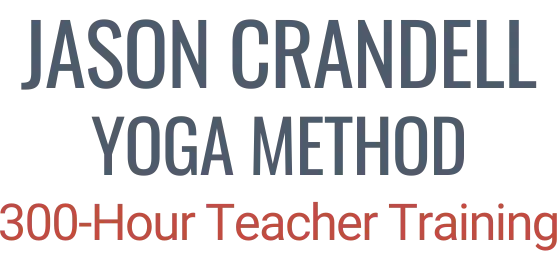WHY THIS SEQUENCE WORKS
Your shoulders have a lot of moving parts. Each shoulder has 4 joints (GH, AC, SC, ST), plus layers and layers of soft tissues that include muscles, tendons, and ligaments. When you add the physical demands that the shoulders undergo on a daily basis to the complexity of the region, you wind up with an unavoidable truth: Your shoulders need regular—if not daily maintenance—if you want your upper-body to be functional and comfortable.
ONE IMPORTANT THING ABOUT YOUR SHOULDERS, NECK, AND UPPER-BACK
We frequently take our body for granted. Even as yoga practitioners, we often forget the intricate subtlety and profound majesty of the body. When we take our body for granted, we forget that it needs our attention and care. We forget that our body needs regular—if not daily maintenance—especially as our body ages. I’ve watched my body through my yoga practice for 20 years and it’s finally become clear that my shoulders, neck, and upper-back need a simple, quick, daily practice if I want them to work optimally. I created the following sequence for myself a few months ago and I’ve been extremely consistent with it. It’s usually not the entirety of my practice or training on any given day. Rather, it’s a supplement. It’s simple, basic, and hugely effective. Think about it as the equivalent of brushing your teeth or taking a shower. It’s just basic hygiene that helps you feel better.
My recommendation is to do this sequence several days a week. It’s only going to take 10-15 minutes and it will be worth every moment. If you have a regular yoga practice, sneak this in at the end of your sequence. If you train, run, workout, or ride a desk all-day long, do this sequence in the evening before you go to bed. Just figure out a way to put this into your routine.
Yoga for Shoulders and Neck | Yoga Sequence to Relieve Tension in the Shoulders, Neck and Upper Back
POSES 1-3 : Child’s Pose and Cat Pose
Child’s Pose and Cat Pose gently round the upper-back and release tension in the muscles that lay between the shoulder-blades. Since the head hangs freely in these postures, the muscles in the neck don’t have to work to support the weight of the head. This creates a nice, much needed rest for these often over-worked muscles.
POSES 3-6: Yoga for Shoulders and Neck Tension
If you practice with me live, online or with these illustrated sequences, you’ll recognize this straightforward, 4-pose shoulder-opening combination. I use this mini-sequence all the time. In fact, you can think about these 4 poses as a “mini shoulder-opening sequence” within a sequence. If you don’t have time to do this entire practice, these 4 poses will knock plenty of the rust off of your shoulders by themselves. These postures will help create mobility in your shoulders by taking them through a significant range of motion. If sitting in Virasana is difficult for you—or, you want a little more movement in your practice—you can do this combination of shoulder openers in Tadasana, Warrior 1 or Warrior 2.
POSES 7-10: Shoulder Opening Lunge and Forward Bends
Poses 7 – 10 are included to get you moving a little bit more. Even though this sequence is mellow, it’s nice to have a few poses where you can feel your body work. If you externally rotate your upper-arms and broaden your shoulder-blades properly, you will release the weight of your head and neck in down dog. This will help stretch the space between your shoulder-blades. Low lunge with your fingers interlaced behind your back will stretch your the front of your shoulders and chest. The two wide-legged standing forward bends will stretch your entire back-body and release tension in your upper-body by letting the weight of your head and neck to drop.
POSE 11: Dolphin Pose with Hands at Wall
Down Dog with the elbows on the floor and the hands on the wall is one of my favorite shoulder openers. It creates the same effect as Down Dog, but it increases the amount of leverage that you can stretch your shoulders with. To do this posture effectively, place your hands on the wall with your fingers pointing away from each other (your thumbs will face the ceiling). Keep your elbows shoulder-width apart. The most common mistake that people make when they’re practicing this pose is to lean their shoulders toward the wall. Instead—just like you do in Down Dog—press your shoulders toward your legs.
POSES 12: Viparita Karani
Legs Up The Wall. Need I say more?
If you want to feel more confident and knowledgeable about your sequencing skills, check out my online course, The Art of Yoga Sequencing. It’s great for yoga teachers and students who want to better understand how the body works and how to stretch and strengthen effectively.
{illustration by MCKIBILLO}
Want more sequences by Jason?
Sign up to join our newsletter and we’ll send you our e-book:
30 Essential Home Practice Sequences.





